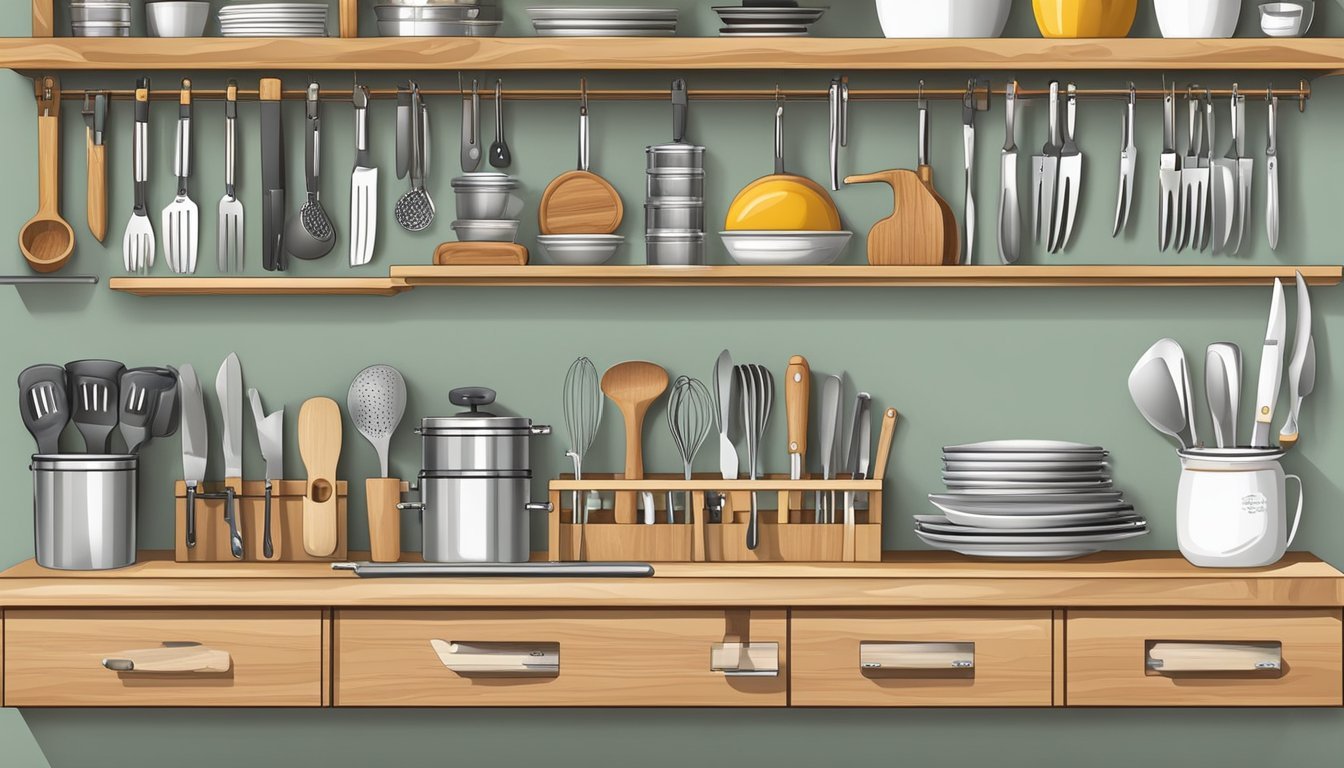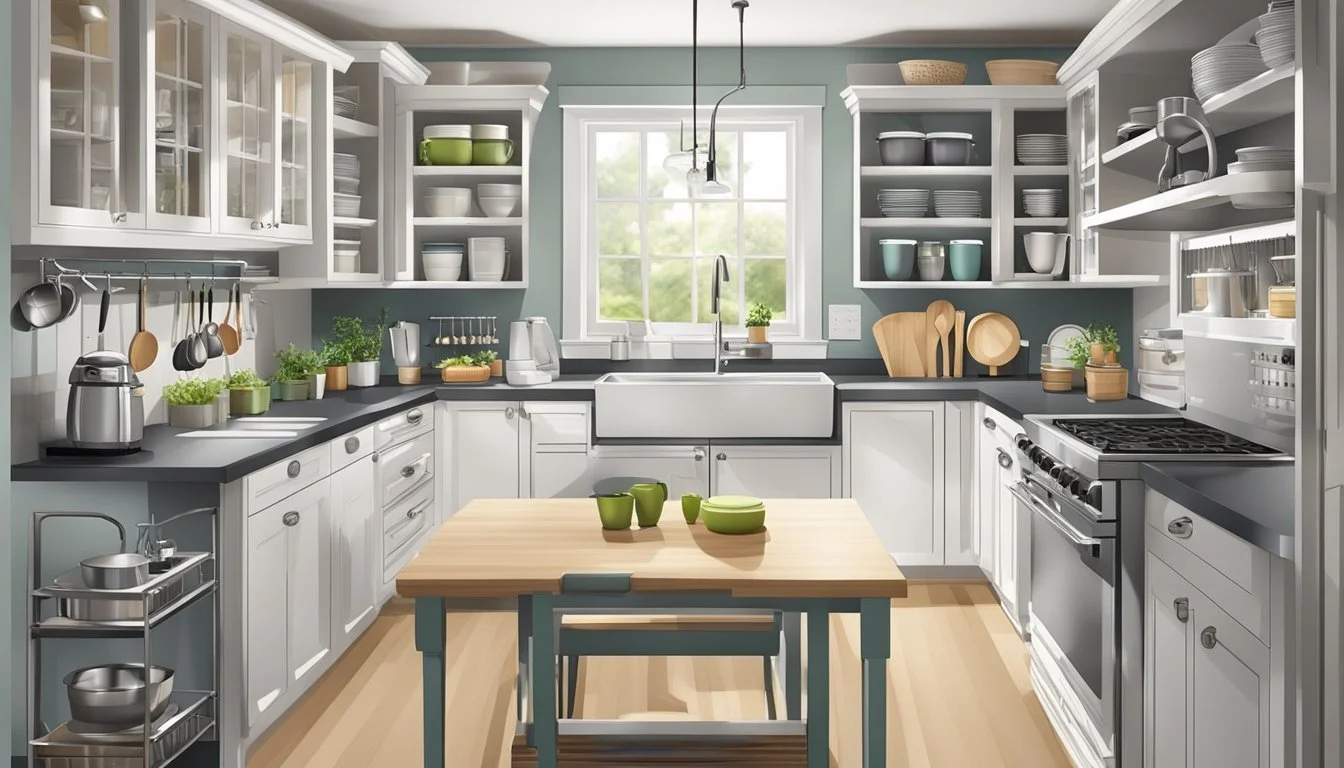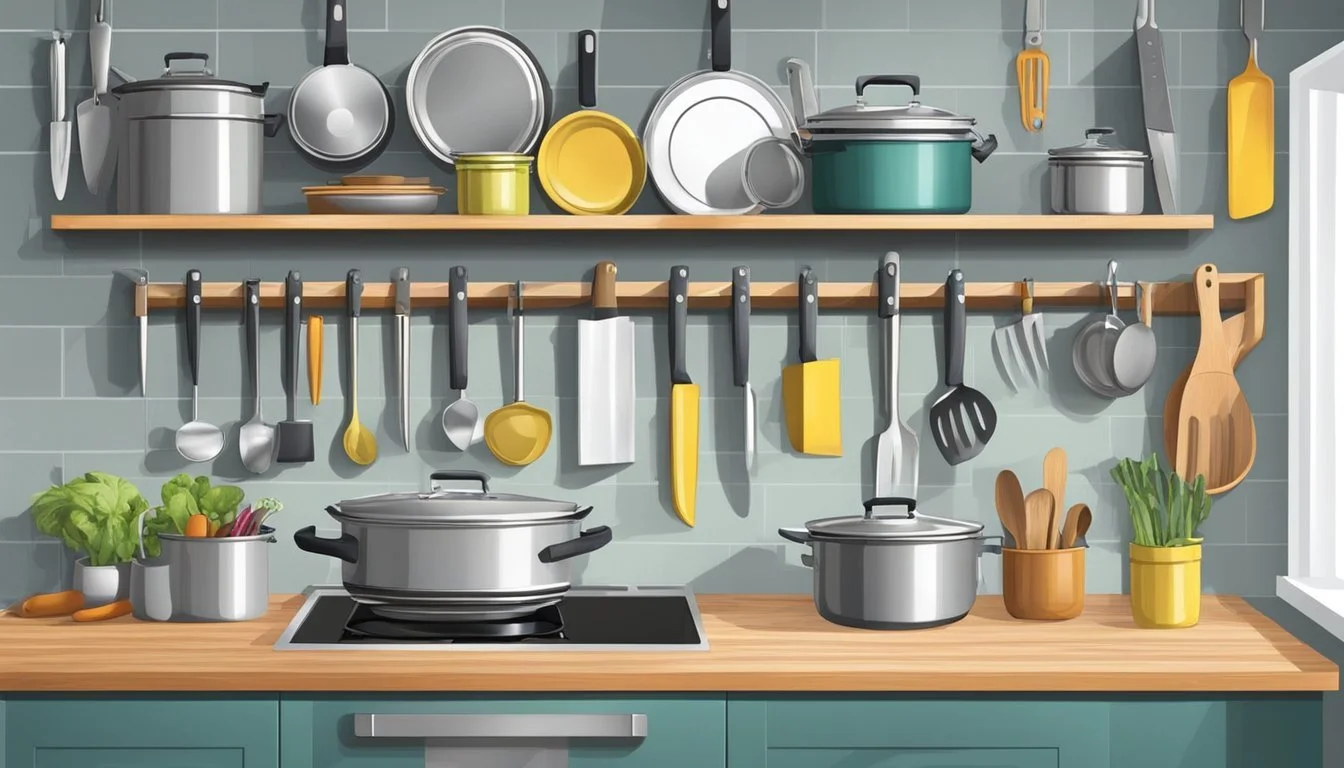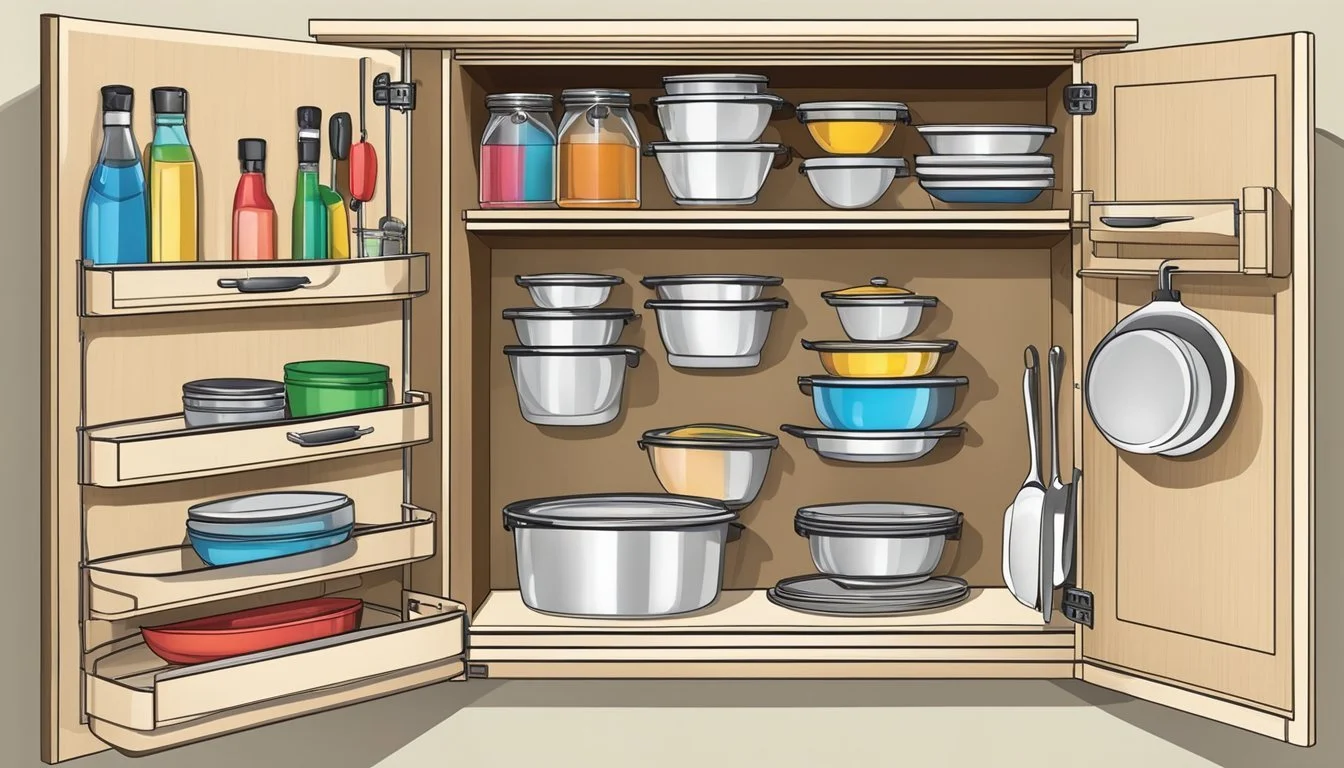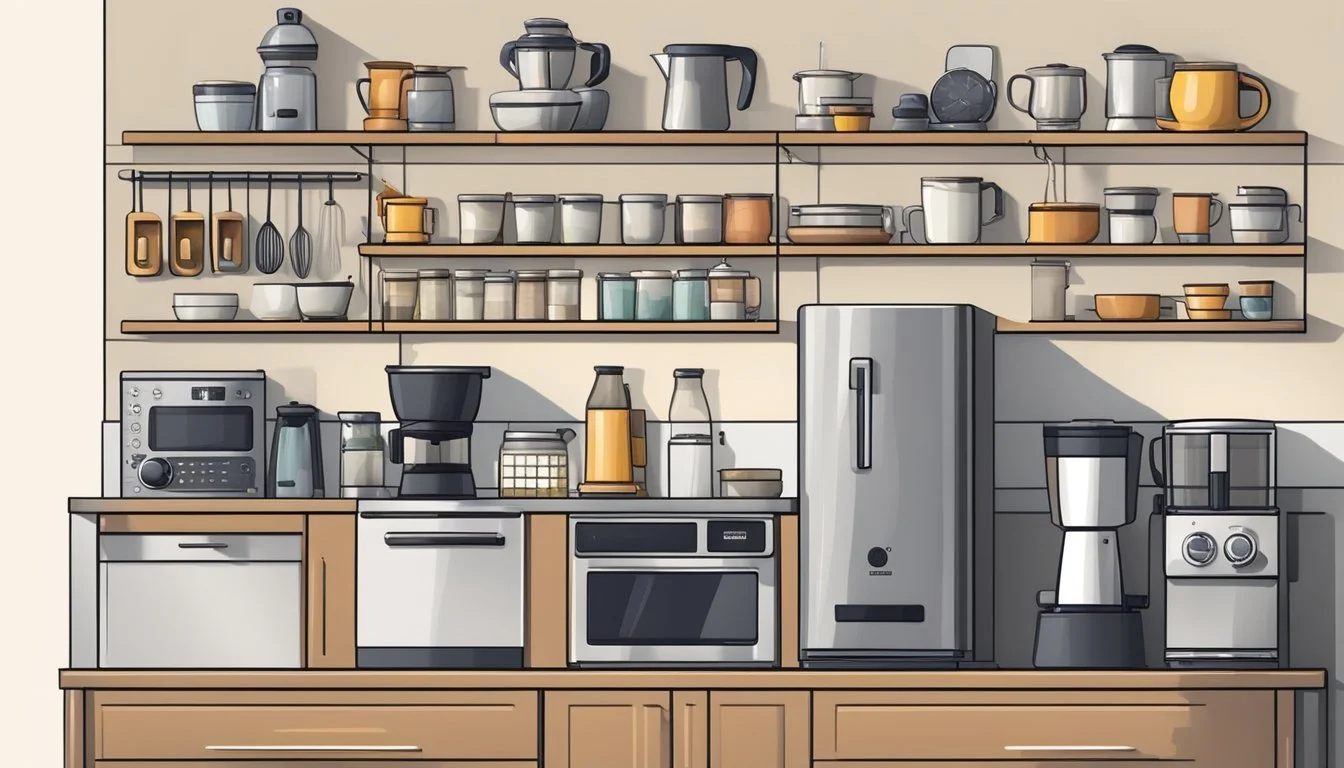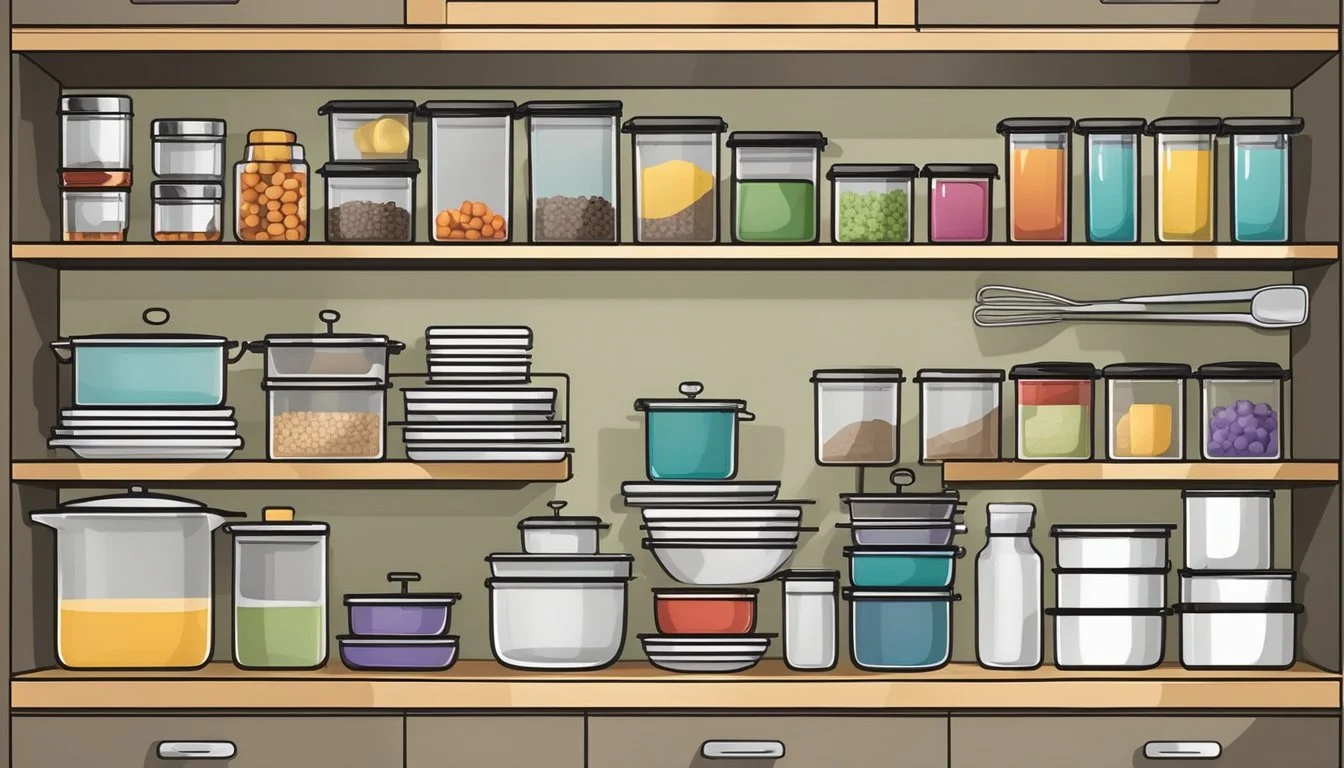10 Clever Ways to Store Your Kitchen Gadgets
Space-Saving Solutions
Maximizing kitchen space with clever storage solutions is essential to maintaining a neat and functional cooking area. The right organization strategies can transform even a small kitchen into a well-arranged space where every gadget has its place. Streamlining storage not only helps in finding utensils and appliances quickly but also contributes to a clearer countertop, offering more room for culinary activities.
Innovative storage ideas are not just about saving space; they're also about enhancing accessibility and efficiency in the kitchen. Utilizing walls to hang utensils, employing clear glass jars for both visibility and style, or integrating drawer dividers are some of the numerous ways to keep the kitchen organized. These methods ensure gadgets are stored in a way that complements the kitchen's workflow, making every cooking task smoother and more enjoyable.
For those who struggle with cluttered drawers or overstuffed cabinets, embracing clever storage solutions is a game-changer. From tension rods in drawers to stainless steel rails, the possibilities are vast and readily adaptable to any kitchen style or size. Reorganizing with these strategies not only refines the appearance of the kitchen but also enhances its overall functionality, assuring that every tool is readily at hand when needed.
Assessing Your Space and Gadgets
Before one starts organizing their kitchen gadgets, they need to take stock of their available space and the items they have. Ensuring that the kitchen remains functional and free from clutter is especially crucial in a small kitchen.
Evaluating Kitchen Layout
Evaluating a kitchen's layout involves looking at the overall space and determining areas that are underutilized. One should consider the location of electrical outlets, storage cabinets, and counter space. For example, empty walls or unused corners can be transformed into storage areas with shelves or rails. A small kitchen might benefit from vertical storage solutions, such as hanging utensils or collapsible shelves, to keep the counters clear and maintain a functional cooking area.
Categorizing Gadgets by Frequency of Use
A kitchen can only be effectively organized if gadgets are sorted by how often they are used. Items that are used daily should be easily accessible, whereas seldom-used gadgets can be stored higher up or in less reachable areas. This can be visually represented like so:
Daily Use: Drawer dividers or countertop containers.
Spatulas
Cutting boards
Weekly Use: Lower cabinets or back of the counter.
Measuring cups
Occasionally Use: High shelves or deeper storage.
Specialty appliances
Seasonal molds
By categorizing items, one can keep a small kitchen organized and functional without creating clutter. Essential tools are at arm's reach, while less frequently used items are stored out of the way but still within the kitchen's confines.
Innovative Organizing Solutions
In the quest for a tidy and functional kitchen, one must think beyond the conventional cupboard and pantry storage. These innovative organizing solutions focus on optimizing every inch of kitchen space with style and efficiency.
Utilizing Vertical Space
The kitchen's vertical dimensions offer a wealth of storage possibilities. Walls and the sides of cabinets can be transformed into storage havens with the use of pegboards or magnetic strips. Here, users can hang utensils, pots, and pans within easy reach. Additionally, a two-tiered hanging produce basket serves both a practical function and aesthetic purpose, keeping fruits and vegetables separate and visible.
Maximizing Drawer Space with Organizers
Drawer space is often underutilized in kitchens. The incorporation of drawer dividers and organizers converts a jumbled mess into a structured array of gadgets. For example, consider using a dedicated case for coffee filters, ensuring they remain organized and easily accessible. The right organizer can turn a chaotic drawer into a neatly arranged toolkit.
Adopting Open Shelving
Open shelves are a trending element in kitchen design, functioning as both storage and display areas. One can harness the utility of open shelves by neatly stacking dishes and arranging them according to frequency of use. This not only creates an appealing display but also makes daily-use items more accessible.
Pots and Pans: Place on lower shelves for effortless retrieval.
Seldom-used Gadgets: Store higher up, leaving prime real estate for items in constant rotation.
Pantry Organization Techniques
Optimizing pantry organization enhances the functionality of a kitchen, making food preparation easier and more efficient. This section covers tailored strategies for maximizing pantry space, arranging dry goods for convenience, and implementing creative solutions for spice storage.
Effective Use of Pantry Space
To effectively utilize pantry space, consider vertical storage solutions. Adjusting shelf heights allows for accommodating items of varying sizes, while stackable clear bins take advantage of vertical space. Labels facing outward ensure items are easily identifiable.
Adjustable shelving: Suit the space to your needs by altering shelf heights.
Stackable bins: Use the vertical dimension by stacking bins for increased capacity.
Organizing Dry Goods for Easy Access
Dry goods are best stored in transparent, airtight containers to maintain freshness and allow for quick inventory assessments without opening each container. Placing frequently used items at eye level ensures they are readily accessible.
Airtight containers: Seal in freshness and protect against pests.
Eye-level placement: Keep everyday items within sight and reach.
Innovative Spice Storage Ideas
Spice storage requires creativity due to the variety of container sizes. Magnetic spice racks on the inside of the pantry door or tiered shelving can conserve space and make labels visible. This approach not only saves space but also transforms the way one interacts with their array of spices.
Magnetic racks: Attach spice containers to a metal surface, saving shelf space.
Tiered shelving: Display spices in ascending order for easy visibility and reach.
Utilizing Wall and Ceiling Space
Maximizing vertical space with wall and ceiling storage is a key strategy in organizing kitchen gadgets efficiently. By lifting utensils and cookware off the countertops, these solutions not only save space but also keep items within easy reach.
Installing a Pegboard for Utensils
A pegboard provides a versatile wall-mounted storage system for kitchen utensils. With customizable hook placements, one can easily reorganize and accessorize the board to fit a changing array of tools.
Advantages:
Customizable layout
Easy access to utensils
Saves drawer and counter space
Hanging Pots and Pans
Ceiling racks or hooks can transform unused overhead space into a practical storage solution for pots and pans. Hanging them up keeps them out of the way yet in an orderly fashion, making the kitchen appear uncluttered.
Recommendations:
Install a sturdy ceiling rack above the kitchen island or stove.
Use S-hooks to hang pots and pans by their handles.
Ensure the rack is securely mounted to support the weight of the cookware.
Rethinking Cabinet Storage
When reorganizing kitchen cabinets, it's essential to utilize accessories that maximize space efficiency and ease of access. Baskets and bins can declutter and categorize, upright storage solutions keep bakeware orderly, and turntables can provide easy access within corner cabinets.
Organizing with Baskets and Bins
Using baskets and bins gives individuals the ability to group similar items together, preventing clutter and making it easier to find what's needed. For example, one can assign a basket for snack items like chip bags and granola bars ensuring they are handy but not scattered.
Chips, Crackers, Snacks
Basket A: Chips
Basket B: Crackers
Basket C: Snacks
Incorporating Upright Storage for Bakeware
Upright storage solutions, such as vertical dividers, can be installed in cabinets to create designated slots for bakeware. This prevents stacking, which often leads to difficulty in retrieving items and potential damage. Each piece, from baking sheets to cutting boards, has its own slot for easy access.
Bakeware Storage
Slot 1: Baking Sheets
Slot 2: Muffin Tins
Slot 3: Cutting Boards
Using Turntables for Corner Cabinets
Turntables, or lazy Susans, exploit the hard-to-reach areas of corner cabinets. They make items easily accessible with a simple spin. Storing condiments, spices, or small containers on a turntable ensures that nothing gets lost in the back of the cabinet.
Corner Cabinet Turntable
Section 1: Condiments
Section 2: Spices
Section 3: Small Jars
Convenient Appliance Storage
When optimizing kitchen space, the goal is strategic storage that keeps appliances accessible yet uncluttered. The focus should be on functionality without sacrificing aesthetic appeal or efficiency.
Creating a Functional Appliance Garage
A dedicated appliance garage can be a game-changer in kitchen organization. It allows frequently used gadgets like toasters and coffee makers to be easily reachable without taking up valuable counter space. Here's how to set one up:
Measure: Ensure the allotted space is sufficient for appliances both in width and height.
Accessibility: Install outlets within the garage for direct use of appliances.
Shelving: Adjustable shelves allow for customization according to appliance size.
Strategies for Bulky Appliances
For items like stand mixers and slow cookers that are hefty and unwieldy, the following strategies can streamline storage:
Pullout shelves: These shelves allow heavy appliances to be stored low and lifted easily without strain.
Custom cabinetry: Cabinets with built-in lifts can securely hold bulky gadgets, elevating them to counter height when needed.
Overhead storage: Utilize ceiling-mounted racks for items that are less frequently used but still need a place out of the way.
Space-Saving Hacks for Small Kitchens
Optimizing storage in a small kitchen is all about clever use of space and multipurpose tools. Two key strategies involve investing in nesting cookware and exploiting hidden spaces to maintain functionality without compromising on style or efficiency.
Investing in Nesting Cookware
For those with a small kitchen, nesting cookware is a game-changer. This type of cookware is designed to fit snugly together, one piece inside the other, minimizing the space required for storage. Look for sets that include a range of sizes:
Saucepans
Bowls
Mixing bowls
Baking dishes
When not in use, these items can be stacked neatly, freeing up valuable cupboard and counter space. Top-quality nesting cookware is often made from durable materials like stainless steel or silicone, ensuring both longevity and easy cleaning.
Exploiting Hidden Spaces
Every small kitchen has underutilized areas just waiting to be transformed into practical storage. These "hidden spaces" can be found:
Under the Sink: Ideal for stackable bins and pull-out drawers for cleaning supplies.
Inside Cabinet Doors: Attach racks or holders for lids, cutting boards, or a small trash bin.
Above the Fridge: A prime spot for lesser-used items or bulk storage.
By employing these techniques, vital cooking gadgets and essentials stay organized and accessible, maximizing the existing layout of a small kitchen.
The Role of Labels and Inventories
Organized kitchen storage is pivotal for a functional space. Labels and inventories are crucial tools that aid in maintaining a neat and tidy kitchen, ensuring everything has its place and is easily accessible.
Creating a Kitchen Command Center
A kitchen command center acts as the hub for all kitchen organization. By centralizing labels, calendars, and inventory lists, one transforms a simple space into a strategic area that oversees kitchen operations. This designated spot can contain a whiteboard or a corkboard which houses lists of pantry items and their locations, meal plans, and a running inventory of perishables. Utilizing a command center streamlines the cooking process and prevents the purchase of unnecessary duplicates.
Command Center Essentials:
Whiteboard or corkboard
Inventory lists
Calendar
Meal planning tools
Labeling for Efficiency and Aesthetics
Proper labeling goes beyond mere aesthetics; it serves as a functional guide to the contents of one's kitchen. When appliances and ingredients are labeled, it saves time and reduces error in finding the needed items. Quality labels that clearly identify what's in a container or where a gadget belongs can be both practical and visually pleasing. It's important to choose labels that withstand kitchen conditions and are easy to update.
Labeling Tips:
Use waterproof and oil-resistant labels.
Ensure labels are legible with bold lettering.
Keep a consistent labeling style for coherence.
Utilizing labels and inventories, homeowners establish an efficient system that simplifies kitchen use and upkeep.
DIY Solutions for Custom Storage
Creating custom storage solutions enables one to maximize space and organize kitchen gadgets efficiently. These do-it-yourself approaches can be tailored to fit specific needs and personal tastes.
Building Custom Drawer Organizers
Custom drawer organizers ensure that every kitchen gadget has a designated spot, reducing clutter and saving time during cooking. DIY enthusiasts can measure drawer interiors and create compartments using thin wooden slats or sturdy cardboard segments. They should plan layouts considering the dimensions of their utensils, allowing for both horizontal and vertical dividers. After cutting materials to size, they can either fix the segments in place using wood glue or create interlocking designs that don't require adhesive.
Key materials:
Wooden slats or thick cardboard
Wood glue (optional)
Measuring tape
Saw or cutter
Crafting Homemade Lazy Susans
A homemade lazy susan provides a rotating storage solution, perfect for corner cabinets and high-shelf accessibility. They can craft these by attaching a rotating base to a round platform, such as a pre-cut wooden circle. Using ball bearings and a swivel mechanism ensures smooth rotation. It's important to size the lazy susan appropriately to fit within the intended space, leaving enough clearance for operation.
Steps to build:
Select a round wooden platform.
Install the swivel mechanism to the base.
Attach the ball bearings ensuring even weight distribution.
Place the lazy susan in the desired location for easy access to kitchen gadgets.
By adopting a careful and deliberate approach, one can construct effective storage solutions that cater to individual kitchen organization needs.

